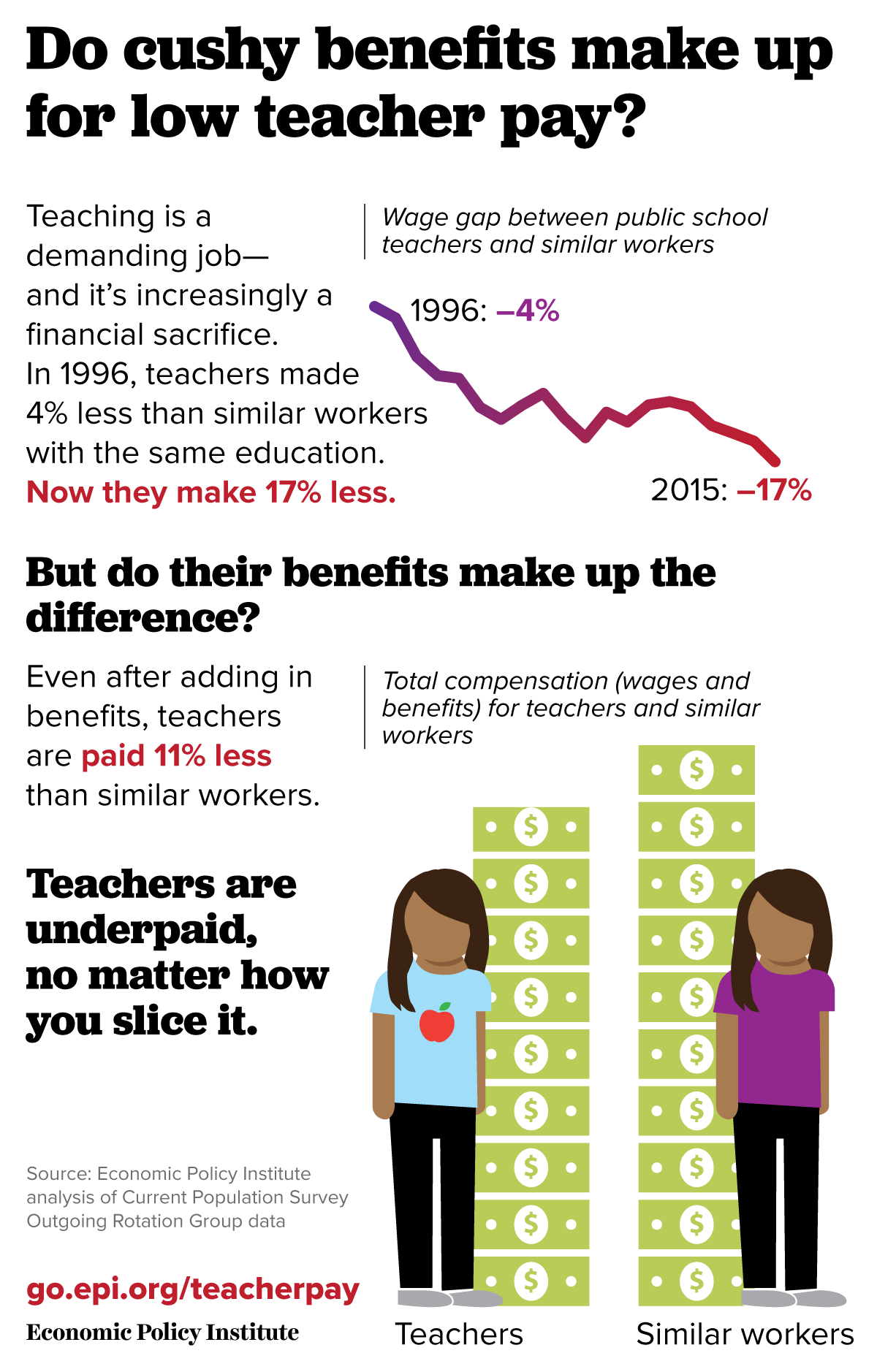It’s back to school time and while many of us say we value our teachers and our children’s teachers, that is not reflected in their paychecks—and it’s getting worse: teachers’ pay has been steadily decreasing over the last several decades.
The figure shows that since 1996, the teacher wage gap—the gap between what teachers make in weekly wages compared with similarly educated and experienced workers—has increased from -4.0 percent to -17.3 percent. Since 1996, teachers’ weekly wages have decreased $30 per week (adjusted for inflation) while all college graduates’ average weekly wages have increased $124.

The wage penalty has grown astonishingly among women. In 1960, female teachers earned 14.7 percent more than comparable female workers. In 2015, there was a -13.9 percent wage gap for female teachers.
Although teachers on average do enjoy better benefits packages than similar workers, benefits only mitigate part of the wage gap, as the figure shows. When considering the total compensation gap (wages and benefits), teachers are still left with a record-high 11.1 percent compensation gap compared to similar workers. Back in 1996 there was just a -2.0 percent gap in compensation between teachers and similar workers.
The opportunity cost of becoming a teacher and remaining in the profession grows as relative teacher pay falls further behind that of other professions. While teaching used to provide a relative advantage for women, it now pays less than many other college professions. Considering the increasing pressure on teachers, growing pay differentials could make it all the more difficult to recruit and retain high quality teachers.
For more information see The teacher pay gap is wider than ever.
